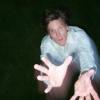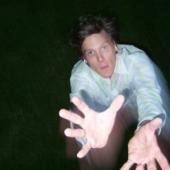Experimental dance: The universe unlocked
Editorial
Experimental dance explores the images, sounds, concepts, revelations and complexities of our time. It does so by instigating transient structures derived through the manipulation of movement, media, technology and conceptual frameworks. Makers of experimental dance attempt to create new dances for the new moment. They believe that the forms of the past, though instructive, no longer speak to our dynamic and changing world. Experimental dance takes no one form or style.
So much of the media with which we interact tells us how to respond to it, providing cues for our reactions. Experimental dance operates outside this system; it serves no one social purpose. Its form and content aren’t laced with one rarified interpretation or meaning locked inside a terpsichorean puzzle.
Rather, experimental choreographers create experiences a viewer can imagine “in parallel to.” In other words, there is nothing to “get,” but there is everything to experience. Experimental dance can awaken you to yourself and to the unique way in which you think and empathize. In turn, the revelation of that intelligence and emotional connection can help you understand why you are you, and what makes the universe the universe.
So the essential question to ask when watching experimental dance is not “what is the choreographer trying to tell me?” The essential question is: “What am I experiencing and how is it having an impact me (physically, mentally, emotionally, etc.)?” Here is a list of other questions you might ask yourself during or after an experimental dance performance, to help you answer the essential question.
What am I looking at?
What am I choosing to ignore?
Why does this dance have this title?
What are my expectations about watching this?
What does this remind me of and what do I see that reminded me of that?
How do I feel right now and how is that different from how I felt a moment ago?
What did I see that changed how I’m feeling?
What am I thinking right now? Is it different from what I was thinking a moment ago?
What did I see that changed what I’m thinking?
Is my mind wandering? If so, where to?
Did some part of the dance remind me of another part of the dance?
How did the design/music/media alter my senses/the dance?
What did I like? What didn’t I like?
How am I experiencing the structure of this dance?
What was the first thing I thought when it started/ended?
Experimental dance offers new models of thinking about our complex world. It also stretches our ability to empathize with others by engaging our brains in complex and unfamiliar choreographic situations. Dance is uniquely able to give form to the squishy untidiness of experience, and dance’s impermanence is its most essential meaning. Experimental dance, in particular, reminds us that the universe isn’t made of objects, but is woven of infinite processes.




